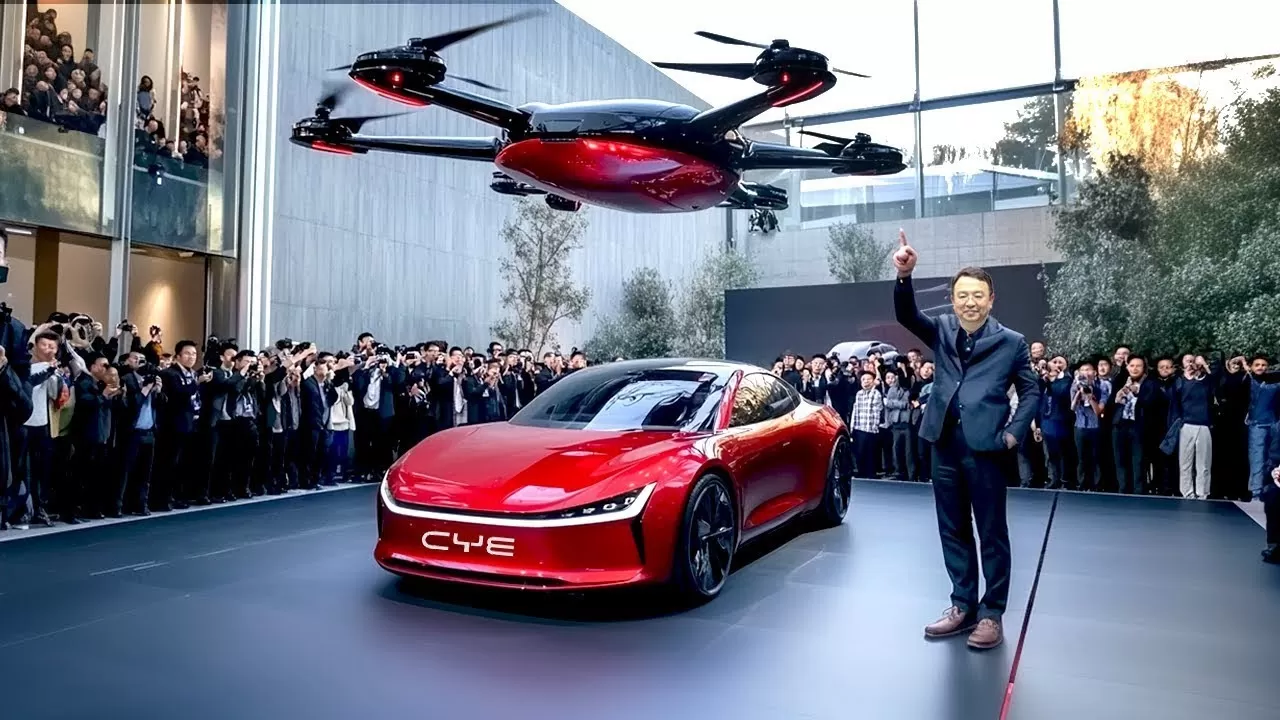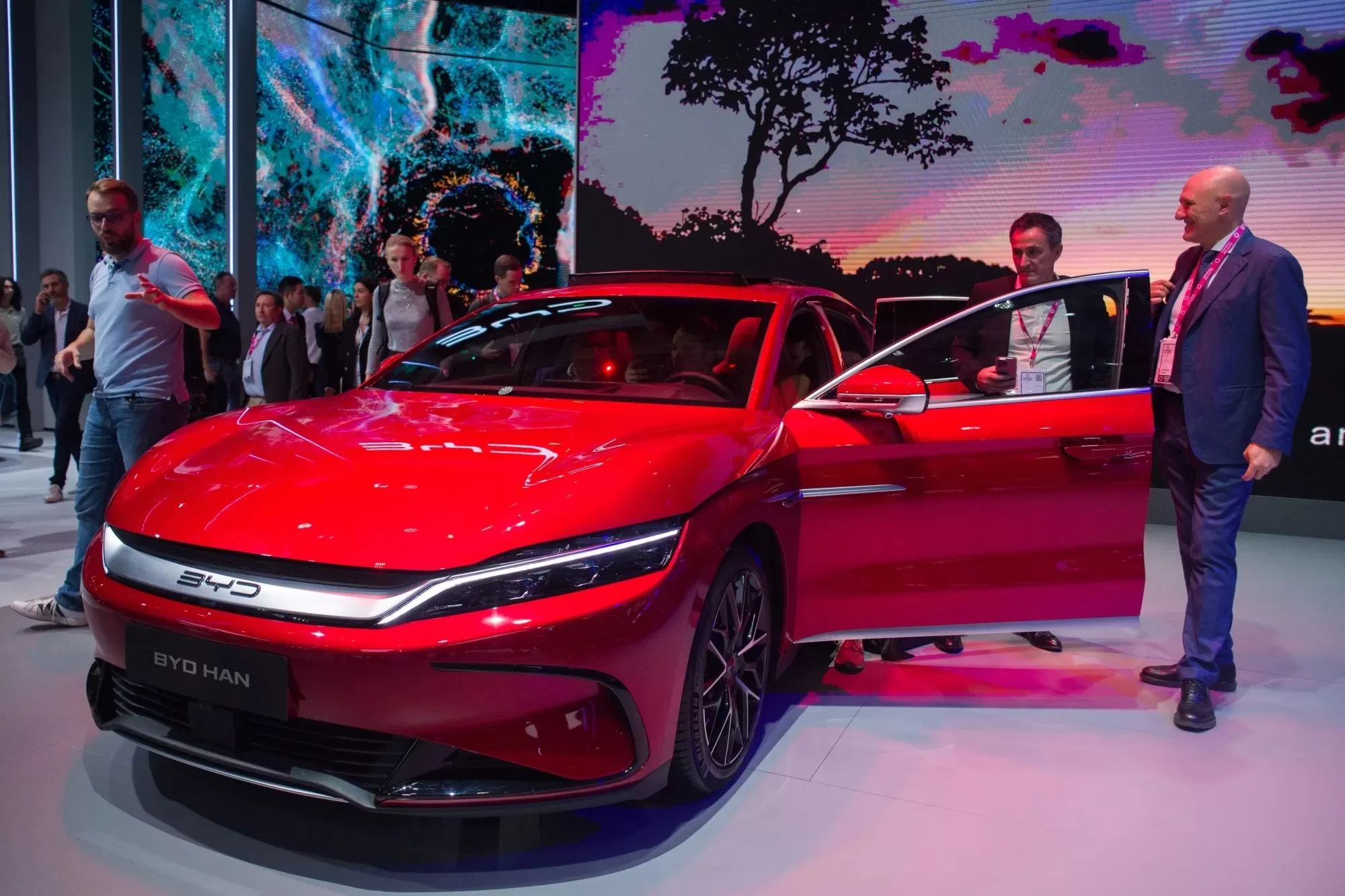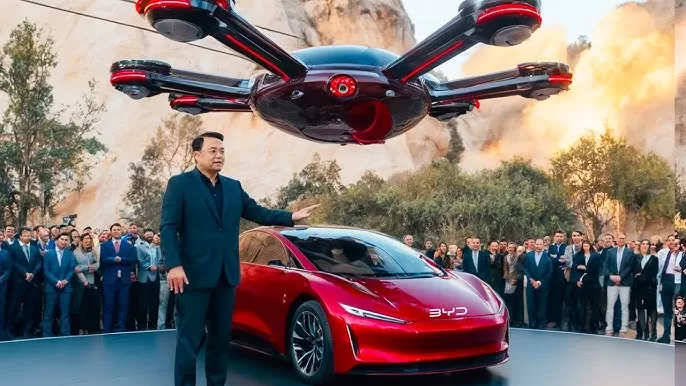#ITHAPPENED! BYD’s Chinese CEO launches the first $7,000 flying car that changes everything!

In a revolutionary turn for the automotive and aerospace industry, BYD’s CEO has officially unveiled the first low-cost flying car, priced at a staggering $7,000. This innovative vehicle promises to transform urban mobility and challenge the giants of technology and transportation.
BYD Revolutionizes Transportation with its Flying Car
BYD, the leading Chinese company in electric vehicles and renewable energy, has taken a step beyond electrification by venturing into flying car technology. Its CEO, Wang Chuanfu, has enthusiastically announced the launch of the first affordable flying car, a real alternative for the mobility of the future.

BYD Flying Car Technical Specifications
BYD’s new flying car combines drone technology with a compact and functional design, standing out for the following features:
- Affordable Price: Costing just $7,000, it is intended to democratize urban air transportation.
- Flight autonomy: It can fly up to 60 minutes on a single charge, reaching speeds of up to 120 km/h.
- Electric propulsion system: Reduces carbon footprint and operating costs.
- Vertical takeoff and landing (VTOL): Allows use in confined spaces without the need for landing strips.
- Automated Control: Equipped with an autopilot system and obstacle avoidance technology for added safety.
A Challenge for Urban Mobility

The introduction of this vehicle could be a game-changer in urban mobility, solving problems such as traffic congestion and pollution. According to Wang Chuanfu, “Our goal is to make flying car technology accessible to everyone and redefine the future of transportation.”
Comparison with Other Market Options
So far, flying cars have been experimental projects from companies like Tesla, Airbus and other Silicon Valley startups. However, these models come with high price tags, with costs running into the hundreds of thousands of dollars. BYD is looking to change this dynamic with its low-cost, mass-production approach.
| Feature | BYD Flying Car | Competitors (Tesla, Airbus, etc.) |
|---|---|---|
| Price | $7,000 | $100,000+ |
| Autonomy | 60 minutes | 30-90 minutes |
| Propulsion | Electric | Hybrid/electric |
| Ability | 1-2 people | 2-4 people |
| Control | Automatic | Manual/semi-automatic |
Global Impact and Regulations
Despite its innovation, BYD’s flying car faces regulatory challenges. Currently, many countries do not have clear regulations for the circulation of personal aerial vehicles. However, China is already working on legislation that could facilitate their adoption. In the US and Europe, agencies such as the FAA and EASA are expected to establish regulations in the coming years.
Benefits for Society and the Environment
The impact of BYD’s flying car is not limited to mobility, but also brings ecological and economic benefits:
- Less traffic in congested cities.
- Reduction of carbon emissions.
- Accessibility for more people.
- New business opportunities in transport and logistics.
Release Date and Availability
According to BYD, the first batch of these flying cars could be available for testing in China in 2025, with gradual expansion to other key markets in Asia, Europe and Latin America in the following years.
Conclusion: Has the Future of Transportation Arrived?
The announcement of BYD’s first affordable flying car marks a milestone in the history of mobility. Although there are technical and regulatory challenges to overcome, the potential impact of this vehicle could be comparable to the revolution brought by the automobile in the 20th century.
The question is no longer whether flying cars will become a reality, but when we will be able to see them in our cities. With BYD leading the way with its accessible approach, the dream of flying to work could be closer than we imagine.




